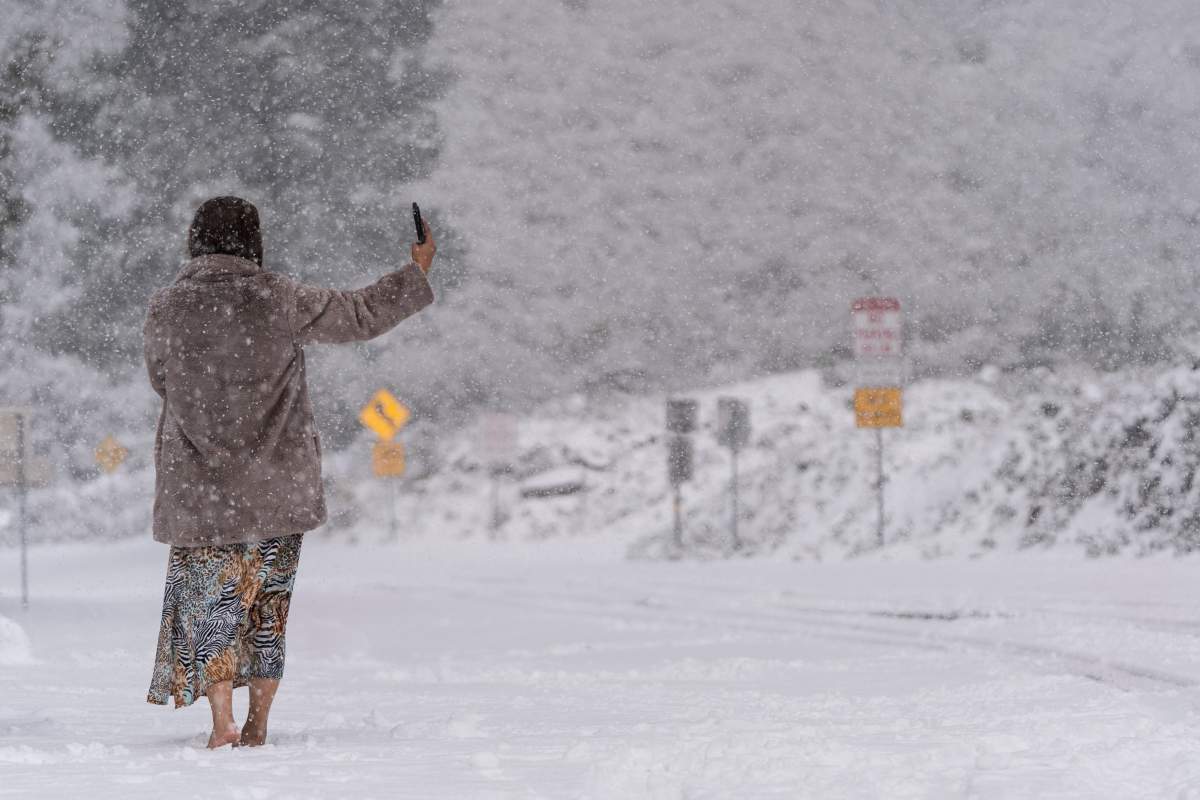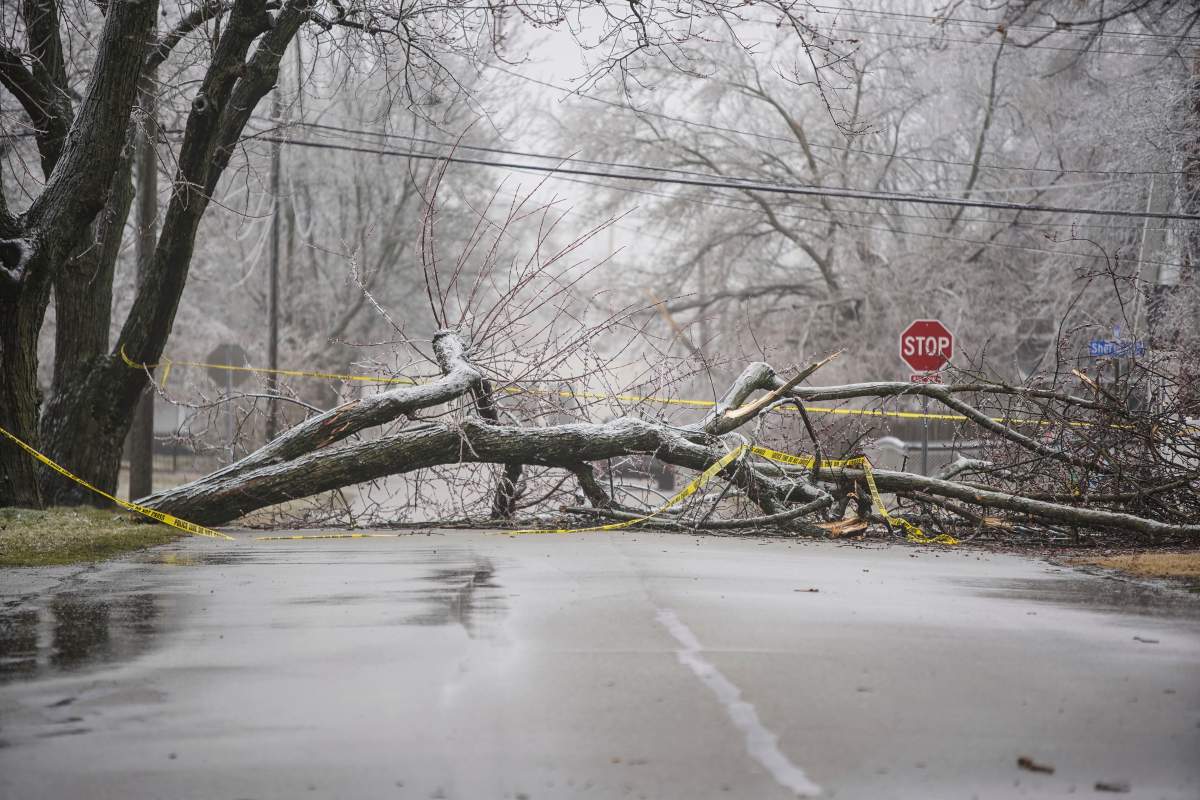Heavy snow and rain pounded California and other parts of the West on Friday as the nation’s latest winter storm intruded, while thousands of people in Michigan shivered through extended power outages wrought by one of the worst ice storms in decades.

The National Weather Service warned of a “cold and dangerous winter storm” that would last through Saturday in California.
Blizzard warnings were posted in the Sierra Nevada and Southern California mountain ranges, where as much as 5 feet (1.5 meters) of snow was expected.
“Simply put, this will be a historic event for the amount of snow over the higher peaks and lower elevation snow,” according to the regional weather office.
Interstate 5, the West Coast’s major north-south highway, was closed south of the Oregon border as snow fell to the floor of the Sacramento Valley and in a high mountain pass north of Los Angeles, where blizzard warnings were in effect. Smaller roads also closed.
Forecasters warned of severe thunderstorms that could create waterspouts off the Southern California coast. A blizzard warning was in effect in part of Nevada.
In the San Francisco Bay area, hundreds of people drove up to 2,500-foot (760-meter) Mount Tamalpais to play in the snow. Julian Skerrett, 19, of Corte Madera, got there early.
“It looks like we’re in Tahoe almost,” he said as flakes fell steadily. “It’s like a powder day, pretty fluffy snow.”

In other storm-battered parts of the country, though, the beauty was lost on most.
The weather has closed major roads, caused pileups, closed schools and snarled air travel. More than 300 flights were canceled and over 3,000 delayed as of midday Friday, according to FlightAware.com.

Get breaking National news
Much of Portland, Ore., remained shut down on Friday with icy roads not expected to thaw until Saturday after the city’s second-heaviest snowfall on record this week — nearly 11 inches.
All told, the storms have blacked out nearly 1 million homes and businesses from coast to coast. Michigan was hardest hit after a storm this week coated branches, power lines and utility poles with ice as thick as three-quarters of an inch, putting more than 820,000 customers in the dark at one point.
By Friday, that was down to under 700,000, most in the state’s populous southeastern corner, around Detroit. Promises of power restoration by Sunday, when low temperatures were expected to climb back above 0 F (-18 C), were of little consolation.
“That’s really vague and that’s really long,” said Apurva Gokhale, of Walled Lake, Michigan. “That’s four days without power in such weather. It’s unthinkable.”

Her home lost power early Thursday. By that evening, the temperature inside had dropped to 55 degrees (12 C). She, her husband and son stayed the night with relatives.
Tom Rankin, 70, said he and his wife were unable to reach his 100-year-old mother-in-law Friday morning by phone. The couple drove to her home in Bloomfield Township, Mich., to find her in bed “with a whole lot of blankets,” Rankin said.
She was fine, Rankin said, and the temperature in her home was about 65 degrees after she lost power on Thursday afternoon. But they helped her to their car, planning to ride out the outage at another relative’s home.
A Michigan firefighter died on Wednesday after coming in contact with a downed power line in Paw Paw, authorities said.
“We’ve not had an ice storm in the last 50 years that has impacted our infrastructure like this,” said Trevor Lauer, president of DTE Electric.

In Southern California, the latest storm began moving in Thursday with rain and snow flurries. Flood watches and warnings were in effect through Saturday afternoon for some coastal regions and valleys, and the potential for rainfall causing flooding and debris flow in some areas burned by wildfires in recent years.
Parts of Interstate 80 in California and Wyoming closed, including about a 70-mile (112-kilometer) stretch over the top of the Sierra Nevada linking California and Nevada.
Evacuation warnings also were issued in Ventura County for four areas considered unstable after being hit hard by storms last month.
The storm has added to major precipitation from December and January ‘atmospheric rivers’ that improved California’s drought outlook, but authorities who allocate water to farms, cities and industries remain cautious because of a recent history of abrupt changes in hydrologic conditions.
The weather service said temperatures could drop far below normal in the region, posing a special risk to homeless people.

Taxin reported from Orange County, California. Contributing to this report were Associated Press journalists Haven Daley in California, Corey Williams in Michigan and Sarah Brumfeld in Washington, D.C., along with many other AP journalists around the U.S.









Comments